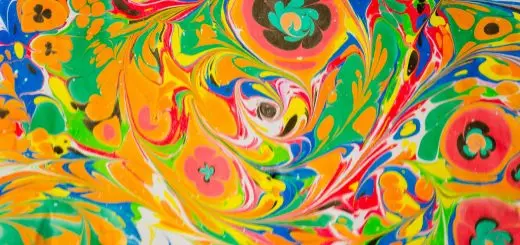Brand Archetypes: Defining Identities That Resonate

Looking for more amazing products? Check out our online store and explore our collection here! Happy shopping!
Before diving in, please note: This post is for informational purposes only. If you’d like to know more about how we approach topics, feel free to check out our friendly Disclaimer Page.
Hey there, amazing readers! 
We’re committed to delivering quality posts, and your support (even just sticking around despite the ads) means everything to us. So, bear with us, and thanks for helping us keep the good vibes rolling. Now, on to the fun stuff!
TRANSLATE BUTTON AT THE END OF THE ARTICLE
A Quick Overview
Brand archetypes are fascinating and powerful tools that help shape a company’s identity.
They’re like personality types for brands, helping them connect with their audience on a deeper level.
By defining these archetypes, businesses can craft messaging that resonates and builds lasting relationships.
This article will explore the concept of brand archetypes, their importance, and how to effectively implement them into your branding strategy.
Understanding Brand Archetypes: A Friendly Overview
Brand archetypes can be traced back to the Swiss psychiatrist Carl Jung, who identified universal symbols and themes present in human psychology.
Jung believed that these archetypes represent fundamental human motivations, which can be leveraged by brands to foster emotional connections with their audiences.
Imagine walking into a party and meeting someone who feels instantly familiar.
That’s the power of archetypes!
Brands can embody these recognizable personas, making it easier for consumers to relate to them.
Using archetypes can help companies clarify their values, vision, and voice, leading to a stronger brand identity.
Brand archetypes serve as a guiding framework.
They help brands establish a consistent narrative and personality across all touchpoints—whether it’s a social media post, an advertisement, or customer service interactions.
By embodying a specific archetype, brands create a cohesive image that resonates with their target audience.
Think about your favorite brands.
Have you ever noticed how some just “get” you?
That’s likely because they channel a specific archetype that aligns with your values and aspirations.
When a brand speaks your language, it creates a sense of belonging, trust, and loyalty.
In a world overflowing with choices, establishing a distinctive brand identity becomes crucial.
By defining a clear archetype, companies can differentiate themselves from competitors and nurture a genuine connection with their audience.
So, let’s dive deeper into the power of archetypes in shaping brand identity!
The Power of Archetypes in Building Brand Identity
Archetypes are more than just a fun branding exercise; they are a strategic asset.
When brands tap into the universal language of archetypes, they enhance their storytelling capabilities.
Engaging stories elicit emotions, and emotions drive decisions.
Here’s how archetypes wield their influence:
Consistency: A well-defined archetype provides a consistent framework for messaging and visuals.
This consistency builds trust with your audience and helps them recognize your brand instantly.
Emotional Connection: Brands that resonate emotionally with their audience can foster loyalty.
When consumers feel understood and represented, they are likely to become brand advocates.
Strategic Decision-Making: By identifying an archetype, companies can make informed decisions about their marketing strategies, product development, and even customer service approaches.
Target Audience Alignment: Archetypes help brands identify and connect with their target audience more effectively.
A brand that embodies the Hero archetype will attract an audience that values bravery and achievement.
Cultural Relevance: Certain archetypes may resonate more in specific cultural contexts.
Understanding these nuances allows brands to adapt their messaging to align with cultural values.
Differentiation: In crowded markets, a strong archetype can set a brand apart.
It allows for unique positioning and a specialized narrative.
As we explore the classic archetypes, it’s important to remember that choosing one isn’t about limiting creativity; it’s about finding a guiding star that aligns with your core values and mission.
When brands harness the power of archetypes, they create identities that resonate above the noise.
Exploring the 12 Classic Brand Archetypes
Now that we understand the significance of brand archetypes, let’s explore the twelve classic archetypes.
Each archetype carries a distinct set of values and represents different motivations.
Here’s a brief overview of the key archetypes:
The Hero: Champions courage and determination to overcome challenges, inspiring others to act.
The Innocent: Values simplicity and optimism, conveying a sense of purity and goodness.
The Rebel: Breaks conventions and challenges the status quo, appealing to those who seek change.
The Caregiver: Represents compassion and nurturing, focusing on helping others and building connections.
The Explorer: Embodies adventure and discovery, encouraging individuals to seek new experiences.
The Sage: Pursues knowledge and wisdom, sharing insights and guidance with others.
The Magician: Represents transformation and innovation, making dreams come true through creativity.
The Lover: Celebrates passion and intimacy, emphasizing connection and emotional engagement.
The Jester: Brings joy and humor to the forefront, reminding us to embrace laughter and fun.
The Ruler: Exudes power and control, focusing on order, stability, and leadership.
The Creator: Values creativity and imagination, striving to bring new ideas to life.
The Everyman: Relatable and down-to-earth, aiming for belonging and connection with everyday people.
Each archetype carries unique traits and values, which can serve as a foundation for brand storytelling and identity.
Understanding these archetypes allows brands to select the one that aligns most closely with their mission and audience.
The Hero Archetype: Inspiring Change and Courage
The Hero archetype is all about bravery and resilience.
Think of brands like Nike, which inspire people to push beyond their limits and strive for greatness.
The Hero archetype embodies qualities like strength, determination, and the pursuit of excellence.
In a world where challenges are ever-present, the Hero archetype resonates with consumers who admire courage and ambition.
It encourages individuals to rise against obstacles and take action, making it a powerful motivator for brands.
When crafting messaging for the Hero archetype, brands should focus on:
Inspiring Stories: Share narratives of triumph and perseverance that evoke emotions.
Empowerment: Encourage customers to take action and make a difference in their lives.
Relatable Challenges: Identify common struggles your audience faces and position your brand as a solution.
Brands that embody the Hero archetype can build strong emotional connections with their audience, fostering loyalty and admiration.
It’s all about creating a culture of empowerment and resilience.
The Innocent Archetype: Embracing Simplicity and Joy
The Innocent archetype represents purity, simplicity, and optimism.
Brands like Coca-Cola and Dove embrace this archetype by promoting happiness, kindness, and a carefree spirit.
The Innocent archetype resonates with consumers seeking comfort and joy in their lives.
It encourages nostalgia and evokes positive emotions by celebrating the simple pleasures.
When developing messaging for the Innocent archetype, brands should focus on:
Positive Imagery: Use bright colors and uplifting visuals to create a joyful atmosphere.
Authentic Communication: Emphasize honesty and transparency, inviting customers to share in the brand’s mission.
Nostalgic Storytelling: Utilize stories that evoke warm memories and feelings of happiness.
By embodying the Innocent archetype, brands can create a warm and welcoming environment that brings joy and positivity to their audience.
The Rebel Archetype: Challenging Norms with Style
The Rebel archetype is all about breaking the mold and challenging the status quo.
Brands like Harley-Davidson and Diesel embrace this archetype by promoting individuality and self-expression.
The Rebel archetype appeals to those who seek freedom, change, and authenticity.
It empowers consumers to embrace their uniqueness and defy societal expectations.
When crafting messaging for the Rebel archetype, brands should focus on:
Bold Communication: Use daring language and visuals that stand out and capture attention.
Emphasis on Individuality: Celebrate uniqueness and encourage customers to express themselves.
Defiant Narratives: Share stories of rebellion and resistance that inspire change.
Brands embodying the Rebel archetype create a sense of belonging for those who dare to be different, fostering a passionate community of advocates.
The Caregiver Archetype: Nurturing Connections with Love
The Caregiver archetype embodies compassion, love, and support.
Brands like Johnson & Johnson and Campbell’s Soup resonate deeply with audiences seeking connection and nurturing.
The Caregiver archetype appeals to consumers’ desire for safety and comfort.
It emphasizes the importance of relationships and caring for others.
When developing messaging for the Caregiver archetype, brands should focus on:
Empathy: Show understanding and compassion for your audience’s challenges and needs.
Supportive Narratives: Share stories of care and community that highlight the brand’s commitment to helping others.
Emotional Connection: Create messaging that fosters trust and strengthens relationships with customers.
By embodying the Caregiver archetype, brands can build lasting connections and loyalty through compassion and support.
The Explorer Archetype: Discovering New Horizons
The Explorer archetype is all about adventure and discovery.
Brands like The North Face and Jeep capture this spirit by promoting exploration and the thrill of new experiences.
The Explorer archetype resonates with consumers seeking freedom and self-discovery.
It encourages individuals to step outside their comfort zones and embrace the unknown.
When crafting messaging for the Explorer archetype, brands should focus on:
Adventure-Driven Communication: Use language and imagery that evoke a sense of wanderlust and excitement.
Encouragement to Explore: Inspire customers to try new things and discover their passions.
Community of Adventurers: Build a community where customers can share their experiences and encourage one another.
Brands embracing the Explorer archetype cultivate a sense of adventure and curiosity, inspiring consumers to live life to its fullest.
The Sage Archetype: Sharing Wisdom and Insight
The Sage archetype embodies wisdom, knowledge, and insight.
Brands like TED and National Geographic resonate with audiences seeking understanding and truth.
The Sage archetype appeals to consumers who value learning and expertise.
It encourages individuals to seek knowledge and share valuable insights.
When developing messaging for the Sage archetype, brands should focus on:
Thought-Provoking Content: Share informative and enlightening materials that inspire curiosity and learning.
Expertise: Position the brand as a trusted source of knowledge and insight.
Encouragement of Discussion: Foster a community where people can share ideas and engage in meaningful conversations.
By embodying the Sage archetype, brands can establish authority and trust, creating a loyal following of knowledge-seekers.
The Magician Archetype: Transforming Ideas into Reality
The Magician archetype embodies creativity, innovation, and transformation.
Brands like Apple and Disney capture this spirit by promoting imaginative solutions and magical experiences.
The Magician archetype resonates with consumers seeking inspiration and the possibility of transformation.
It encourages individuals to believe in their potential and embrace creativity.
When crafting messaging for the Magician archetype, brands should focus on:
Transformative Stories: Share narratives that highlight the power of innovation and creativity.
Inspiring Imagination: Encourage customers to envision new possibilities and embrace their creativity.
Playfulness: Infuse messaging with a sense of wonder and magic that captivates the audience.
Brands embracing the Magician archetype can inspire consumers to dream big and transform their ideas into reality.
Choosing Your Brand Archetype: A Step-by-Step Guide
Finding the right archetype for your brand may feel a bit challenging, but it can be a fun journey!
Here’s a simple guide to help you choose the best archetype:
Reflect on Your Values: What values define your brand?
Identify what’s important to you and your team.
Know Your Audience: Understand who your target audience is and what they value.
What resonates with them?
Analyze Competitors: Look at your competitors and their brand archetypes.
What can you learn from them?
Consider Your Story: What stories do you want to tell?
Which archetype aligns best with your narrative?
Test Your Choices: Once you’ve narrowed down your options, test your archetype with your audience.
Gather feedback and make adjustments as needed.
Embrace Authenticity: Choose an archetype that feels genuine to your brand.
Authenticity is key to building trust.
Remember, selecting an archetype is about finding a fit that enhances your brand’s voice and messaging.
It should feel natural and resonate with both your team and your audience.
Crafting Messaging that Resonates with Your Audience
Once you’ve identified your brand archetype, it’s time to craft messaging that truly resonates.
Here are some tips to help you create impactful messages:
Use Authentic Language: Speak in a tone that aligns with your archetype.
It should feel genuine and relatable.
Connect Emotionally: Tap into the emotions associated with your archetype.
Use storytelling to evoke feelings that resonate with your audience.
Be Consistent: Maintain a consistent voice and messaging across all platforms.
This builds trust and familiarity with your audience.
Engage Your Audience: Ask questions and encourage discussions.
Your audience wants to feel involved and valued.
Visual Identity Matters: Align your visuals with your archetype.
Colors, fonts, and imagery should reflect your brand’s personality.
Adapt and Evolve: Remain flexible and open to change.
As your brand grows, your messaging may need to adapt.
Remember, the goal is to create a connection that goes beyond products and services.
It’s about forging a relationship with your audience based on shared values and understanding.
Conclusion
Brand archetypes serve as powerful tools for businesses looking to define their identity and resonate with their audience.
By understanding the twelve classic archetypes and selecting the one that aligns with your mission, you can craft messaging that builds emotional connections and fosters loyalty.
Whether you embody the Hero, the Caregiver, or the Rebel, the key is to create a brand identity that feels authentic and relatable.
As you embark on this journey, remember that successful branding is about creating lasting relationships built on trust, understanding, and shared values.
Embrace the power of archetypes, and watch your brand identity flourish!

The Enlightenment Journey is a remarkable collection of writings authored by a distinguished group of experts in the fields of spirituality, new age, and esoteric knowledge.
This anthology features a diverse assembly of well-experienced authors who bring their profound insights and credible perspectives to the forefront.
Each contributor possesses a wealth of knowledge and wisdom, making them authorities in their respective domains.
Together, they offer readers a transformative journey into the realms of spiritual growth, self-discovery, and esoteric enlightenment.
The Enlightenment Journey is a testament to the collective expertise of these luminaries, providing readers with a rich tapestry of ideas and information to illuminate their spiritual path.
Our Diverse Expertise
While our primary focus is on spirituality and esotericism, we are equally passionate about exploring a wide range of other topics and niches 

To ensure we provide the most accurate and valuable insights, we collaborate with trusted experts in their respective domains 
Our blog originally focused on spirituality and metaphysics, but we’ve since expanded to cover a wide range of niches. Don’t worry—we continue to publish a lot of articles on spirituality! Frequently visit our blog to explore our diverse content and stay tuned for more insightful reads.
Hey there, amazing reader! 
Check out our store here and take a peek at some of our featured products below! Thanks for being awesome!











